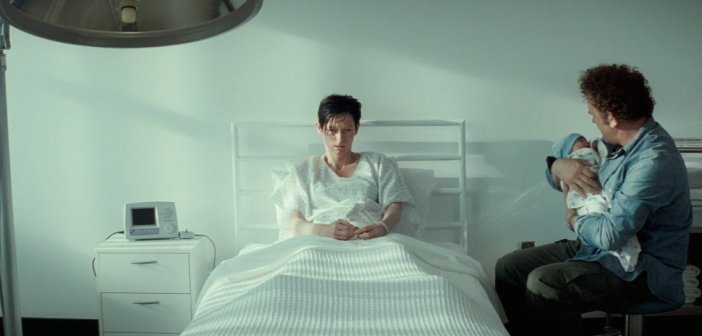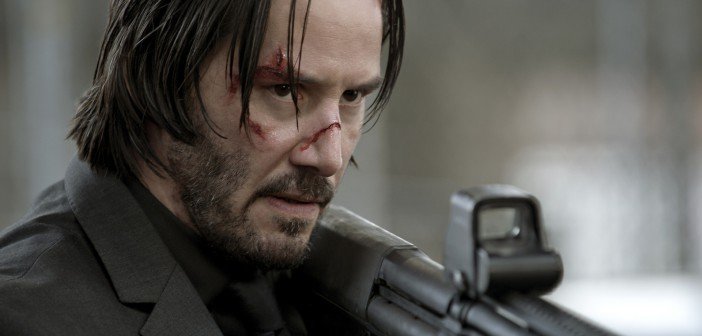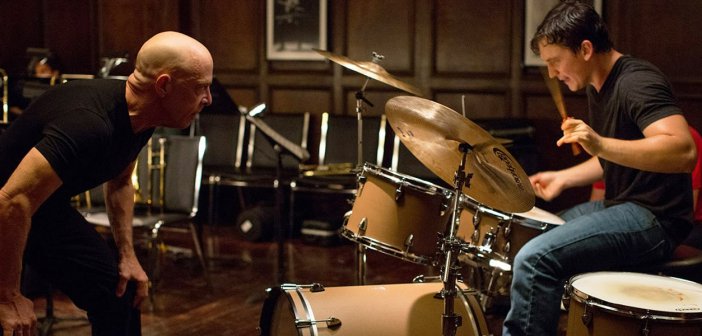10 Films from the 21st Century that the Critics Cruelly Ignored
Last week the BBC released a list of the Top 100 Films of the 21st Century, polled from 180 critics from across the globe. The list featured many great and inspired films from the past 16 years with David Lynch’s Mulholland Drive coming out on top. But here at HeadStuff we felt there were some glaring omissions so we have put together a list of 10 films, in no particular order, that were cruelly excluded from the coveted Top 100 and make an argument for their inclusion.
Cloud Atlas (2012)
[youtube id=”hWnAqFyaQ5s” align=”center” autoplay=”no” maxwidth=”750"]
On paper, a film adaptation of Cloud Atlas sounds like a recipe for a disaster. David Mitchell’s novel of the same name spans countless centuries, with six intertwining narratives taking us from the 19th century up until the year 2321. It is a book that has no strict genre, operating simultaneously as a period drama, a comedy, a science-fiction epic, and a post-apocalyptic nightmare. Undoubtedly a difficult piece to construct coherently in book form, it would seem near impossible to mimic it through film, wherein you have to deal with multiple actors, a soundtrack, and cinematography that must adhere to a single vision. And how can you maintain a coherent style in a film with multiple genres?
Cloud Atlas does not just succeed in this regard, it triumphs, with the film’s ambition acting as its biggest draw. Directed by Tom Tykwer, and Lana and Lilly Wachowski, the film uses visual motifs and audio cues to link its six narratives, each one acting as a reshaping of the last. Actors appear and reappear in various costume and make-up changes throughout its multiple segments. So although the narrative jumps between genre and time, these links offer stability – making each story and retelling seem simultaneously fresh and familiar. With a sweeping, beautiful soundtrack thrown in for good measure, Cloud Atlas pushes the medium of cinema to its very limits, and exhibits the potential it has for communicating grand ideas. Truly it is one of the best films of the last sixteen years, if not the most ambitious. David Monaghan
Dogtooth (2009)

Before The Lobster, Yorgos Lanthimos breakout movie told the story of three adult siblings (two female, one male) who have never left their family home and have no outside contact*. Their domineering parents have kept them isolated and infantilised, spending their days playing childish games, making up words and, in the case of the son, having sex with a prostitute the father ships in and out. They are told, among other things, that you naturally leave home when your ‘dogteeth’ (canines) fall out upon reaching adulthood.
Like The Lobster, Lanthimos’ earlier film feels like a philosophical fairytale that isn’t afraid to pursue its own ideas towards some very dark conclusions. On its journey into darkness, however, Dogtooth is really, really funny. Afterwards, you might be left thinking about how our world views are shaped and how they shape us but while watching you’ll be squirming and laughing uncomfortably at the queasy, grim absurdity of it all. Lanthimos twists the knife as if he’s tickling you with a feather. Ged Murray
*Prostitute excepted.
It Follows (2014)

The idea of a sexually transmitted curse is maybe the most brilliant horror movie premise since Wes Craven dreamt up Freddy Krueger. In It Follows we learn that if you ‘catch’ this curse a figure will appear, visible only to you and taking the form of either a loved one or stranger. It will pursue you at walking speed, never stopping. You can run, you can pass the problem on but this implacable ghoul could work its way back down the chain to return to you some day. You’ll never truly be free of it, ever again.
This could still have been an excuse for titillation (after all, the ‘solution’ is for teens to pass on the curse through shagging) but David Robert Mitchell instead refuses to eroticise our heroine and instead creates an anxiety nightmare film. The production design, a mostly subtle mix of periods, gives this a timeless quality. The cinematography uses deep focus and long takes to scan the environments, turning every extra into a potential threat. The electronic score is dreamy and abrasive as needed.
At the movie’s centre, Maika Monroe anchors it all. Her performance is amazing. She is, understandably, terrified but never a damsel in distress. She’s constantly trying to come to terms with trauma and find support from friends. It’s these ingredients that elevate It Follows to an evocative and incredibly scary masterpiece of adolescent sexual fears. Ged Murray
Sideways (2004)

As his complete shutout from the BBC list proves, Alexander Payne might be the most unheralded of the great American filmmakers. He’s an Oscar winner, sure, but he often finds himself ousted from the elite just because he doesn’t have the scope of an Orson Welles or the virtuosity of a Scorsese. His films are rarely about big “important” things, which just means his greatest crime is that cares about his characters too much. 2004’s Sideways remains his finest achievement for this very reason. Its plot is simple: two middle aged men and long term friends tour California’s Wine country for a last hurrah before one of them walks down the aisle.
Sideways’ heart is found in the sometimes tumultuous but ultimately enduring dynamic between two people who on the surface have no right to enjoys each other’s company – one’s a timid, depressed wine snob, the other a fun loving, adulterous lothario. With the dissimilarly flawed Miles and David, Payne gave a nuanced view of male bonding and the most iconic roles of either Paul Giamatti’s or Thomas Haden Church’s careers. Their trip is emotionally earnest, sometimes sad but frequently hilarious (look out for the best extended take featuring a naked man yet put to film). Like he so often does, the director took a book almost nobody read and turned it into a film almost nobody forgot. Mark Conroy
Russian Ark (2002)
[y[youtube id=”iv-AJ1pqE2Y” align=”center” autoplay=”no” maxwidth=”750"]p>
Alexander Sokurov’s 2002 historical drama, Russian Ark uses state-of-the-art digital filmmaking techniques to bring new life to history, and in turn, utilise the cutting-edge of cinema to make something fitting of the roadshows and theatres of silent cinema. Russian Ark does away with the classic narrative language of cinema. The cut is absent, the film resembles those great silent cinema documents of actuality, trains leaving stations, workers leaving factories, labourers going about their day. Only now, we’re dealing in a long form, unbroken, single-take experience.
Russian Ark feels closer to reality than most films, but not that much closer, as the viewer is taken on a dreamlike walking tour of the Winter Palace in St. Petersberg, history comes to life in front of our eyes. Centuries of hardship, bloodshed, excess and folly unfold as clockwork. Russian Ark is cinematic spectacle, it is art film as theme park ride and despite its trickery and digital fakery there’s a seductive verisimilitude to this picture. When you watch Sokurov’s film, you take a journey unlike any other in cinema. But, importantly you feel a part of that journey, like the film’s mumbling cameraman, you’re unsure of what you’ve just witnessed but you want it to go on forever. Luke Maxwell
We Need To Talk About Kevin (2011)

We Need to Talk About Kevin is another of those critically lauded films that somehow wholly bypassed the Academy when released; likely owing to its bleak subject matter and lack of a clean resolution to feel morally content with. Regardless, it stands out in a similar vein to American Psycho as one of the more affecting additions to its genre. (Almost as if female directors have an interesting perspective on this otherwise male-dominated genre and should be given more opportunities to explore that; shocking. Note that American Psycho was also omitted from the Top 100.)
While the film as a whole is nigh unassailable, even its constituent parts are strikingly memorable. From sound design (one word: sprinklers), soundtrack (Buddy Holly’s ‘Everyday’, forever tainted), the beautifully stark cinematography and, of course, the performances (Swinton, Ezra Miller and Reilly not getting nominated is very nearly as criminal as all the actual murder our titular character needs said talking to about). However in many ways its Joe Bini’s editing that almost steals the show. Creating an incredibly subjective, non-linear narrative experience that charts Swinton’s initial shellshock and unwillingness to accept what her son did, through her attempts to understand and eventually face his actions without ever being able to know for sure if she’s to blame for what he became. Rarely has a film managed to capture so authentically the logic and experience of confronting and working through memories that are gradually destroying someone through guilt and emotionally devastation. Richard Drumm
Enemy (2013)
[you[youtube id=”FJuaAWrgoUY” align=”center” autoplay=”no” maxwidth=”750"]
The lack of Canadian director Denis Villeneuve (Sicario, Prisoners) on BBC’s Top 100 Films of the 21st century was a tremendous oversight. In 2013, the filmmaker made one of the most audacious thrillers of recent memory – Enemy. Based on Jose Saramago’s novel The Double, Jake Gyllenhaal plays a repressed history teacher who discovers that he has a sexually reckless doppelganger (also played by Gyllenhaal). Like the number one film on the list (David Lynch’s Mulholland Drive), Enemy is a mind-bender designed to be analysed by movie fanatics. Its philosophical musings (“chaos is order yet undeciphered”) and psychoanalytic imagery (spiders and keys) reveal more and more about the film’s deliberately complex plot upon repeat viewing.
Enemy is also deeply unsettling, particularly as Javier Gullion’s tightly constructed script enters into its second half and the two look-a-likes come face to face. Gyllenhaal’s performance is a tour de force, delicate as the teacher and mischievous as his possible alter-ego. Nicolas Bolduc’s atmospheric cinematography somehow manages to make the movie’s Toronto setting alluring but also creepy and oppressive, emphasising its spider-web like structures. I couldn’t end a piece on Enemy without mentioning its ending. The film’s final moments are genius, terrifying and absolutely unforgettable. Stephen Porzio
John Wick (2014)

Watching John Wick feels like listening to a poem originally written in a foreign language and expertly translated into English. You understand the content, you recognise the artistry, but it’s following a whole new set of conventions you don’t recognise. From top to bottom the film feels like it came from a parallel universe. The setup (man loses wife, man gets dog, gang kills dog, man goes after revenge) is almost a cliche, but adding the dog into the mix (absurd on paper, deeply affecting in reality) throws it off base.
The action follows no standard pattern, but invents its own, fully-formed. The world-building (exemplified by the old-fashioned solid gold coins used for commerce between assassins) is intimated rather than explained. This adds to the dream-like quality of the film, where the unfamiliar feels familiar. This feeling carries on through the plot, which feel more like folklore than fiction. John Wick the man is literally an underworld legend – Baba Yaga, “the boogeyman”. And John Wick the film feeds on that non-existent legend, creating a sense of depth that makes it seem like a re-telling rather than the amazing innovation that it is. In a genre that thrives on imitation, a unique gem like this is to be treasured. Ciaran Conliffe
This Is England (2006)
[youtu[youtube id=”e37iudp0EA8" align=”center” autoplay=”no” maxwidth=”750"]p>There really isn’t very much left to be said about This is England. The characters created by Shane Meadows appeared onscreen so fully formed that they practically begged to be revisited in three very good TV series. The largely amateur cast, guided by the reliable hand of Stephen Graham, all interpret the script with near virtuous talent conveying the complex rhythms of life with immense ease. Everything character is fully expanded and fleshed out, allowing us to find solace in identifying with Shaun’s loneliness, or disturbing us when we recognise the white hot rage and anger that dwells within Combo, the films damaged nationalist.
It’s no surprise that when the final TV spinoff series aired there seemed to be think pieces published each week about what exactly it was that This Is England “meant”, because Meadow’s created something so close to perfect that it almost became a vehicle for us, something we could project ourselves on. Both universal and deeply personal, political and blasé, of its time and timeless, This is England remains a testament to the power of a good script and a dedicated cast. It’s something that should be taught in schools. Adam Duke
Whiplash (2014)

Whiplash is one of the most impeccably-crafted and thoroughly entertaining films this century. Damien Chazelle was not only able to write a great screenplay but direct with an assured understanding of visual storytelling. His very first scene acts as a microcosm of the film’s dynamic; drummer Andrew Nieman (Teller) struggles to impress the big-shot at his music academy, Terrence Fletcher. Fletcher of course, is the fantastic performance that won J.K. Simmons a well-earned Oscar but is also a creation of the film’s aesthetic. His clean-shaven head tops a ripped frame dressed usually in black trousers and a black t-shirt; such minimalism reflects his character’s no-nonsense attitude. The closer the framing gets to his face, the more trouble Nieman is in.
Miles Teller deserves credit for his performance too. Nieman isn’t the most attractive personality yet we’re completely drawn in by the intensity of his desire to be among the world’s greatest drummers. It’s a nuanced portrayal of what feels like a real person, the kind just as overwhelmed by Fletcher’s larger-than-life persona as we would be.
Such nuance extends to the intelligently-handled romantic subplot and the under-current of the film’s ending which is simultaneously disturbing and celebratory. This movie also won Oscars for Editing and Sound Mixing, possibly on the merit of this final scene alone. Focusing on details at just the right moment, drowning out sound briefly before the intense drumming builds to a thrilling climax, it makes the film an invigorating cinematic experience.Jonathan Victory
Notable others not included in the Top 100: Drive, The Wrestler, In Bruges, Garage, Lord of the Rings, Kill List, Shaun of the Dead, Grizzly Man, Munich, Fog of War, Gladiator, Catch Me If You Can, Man on Wire.

